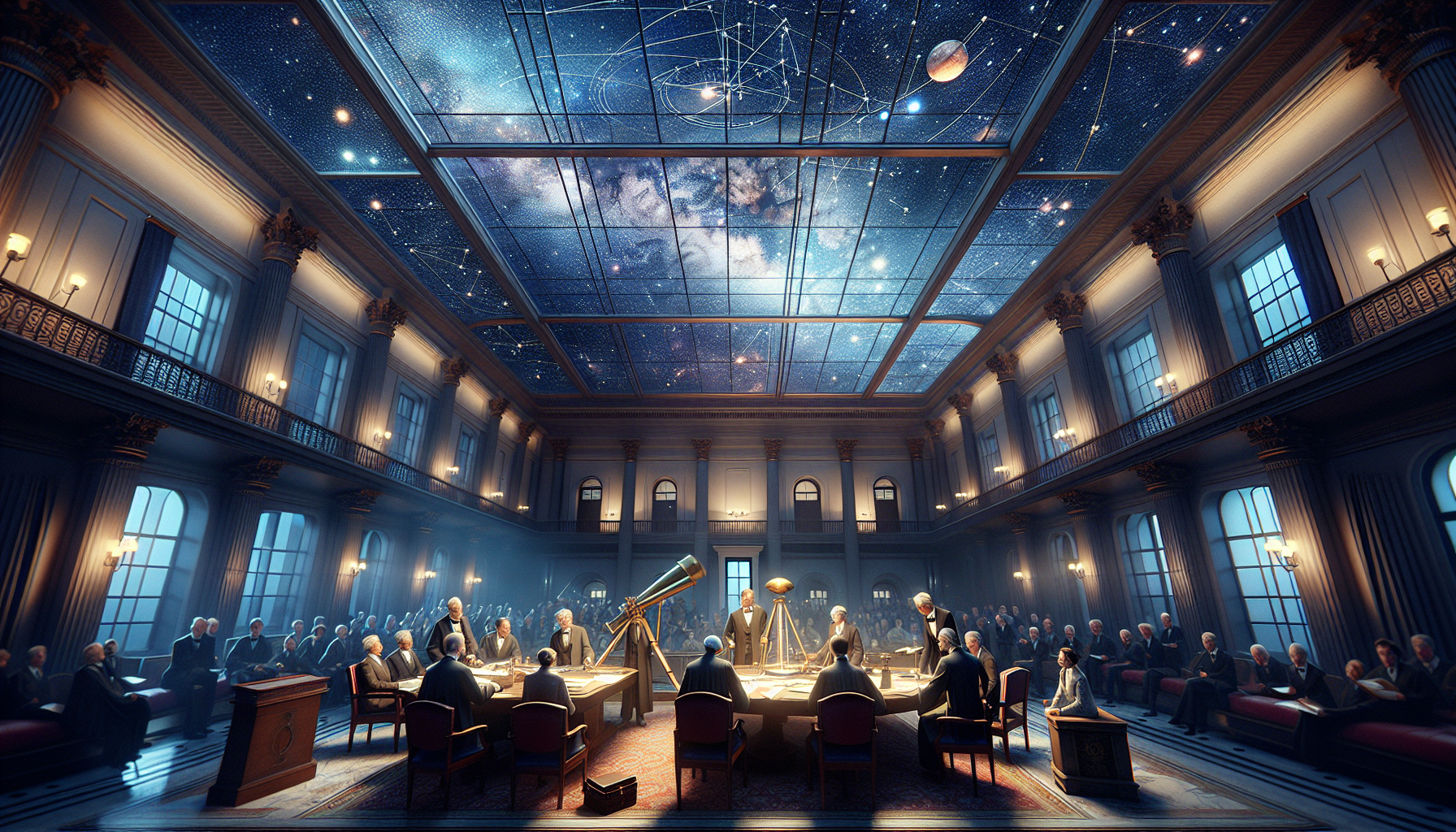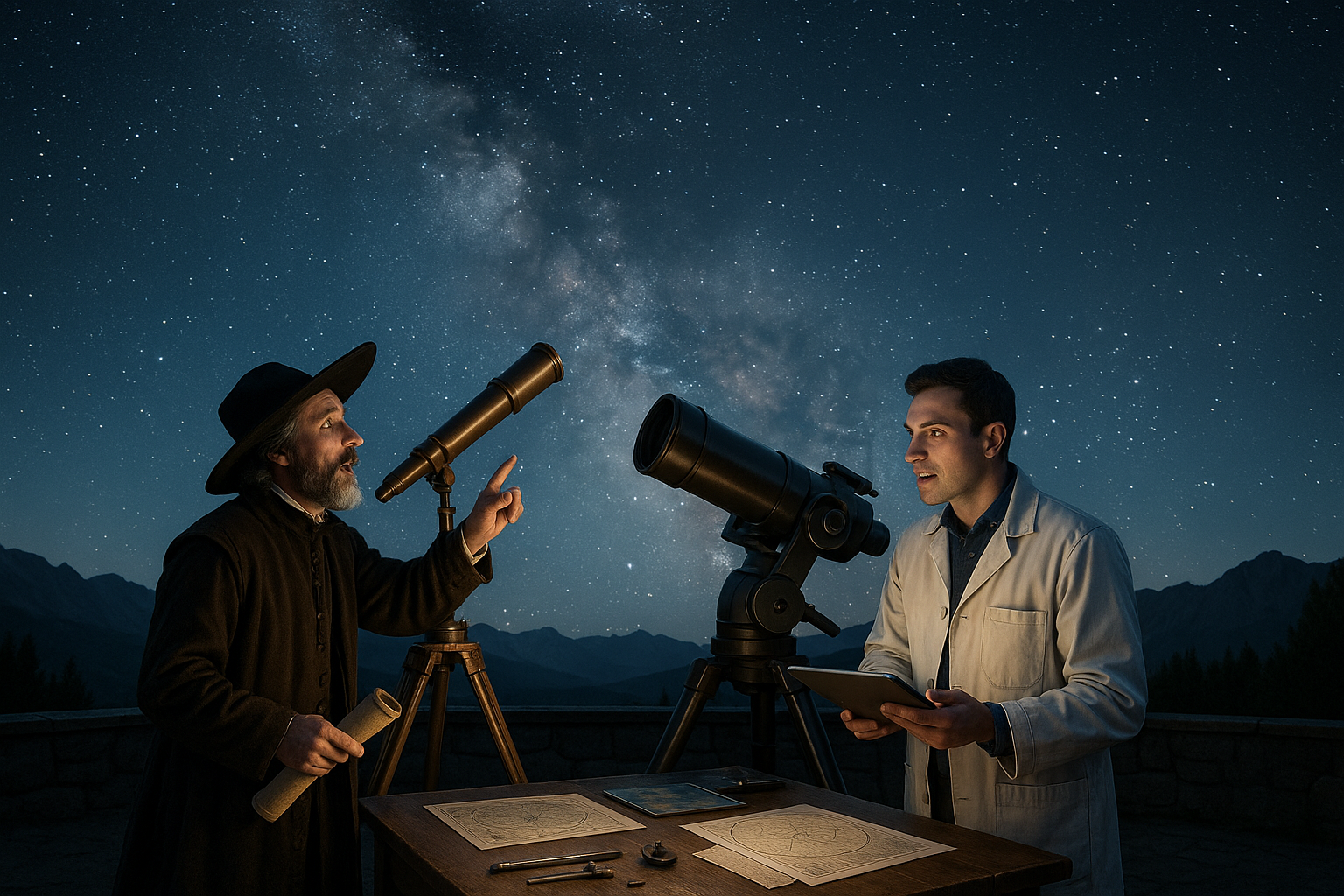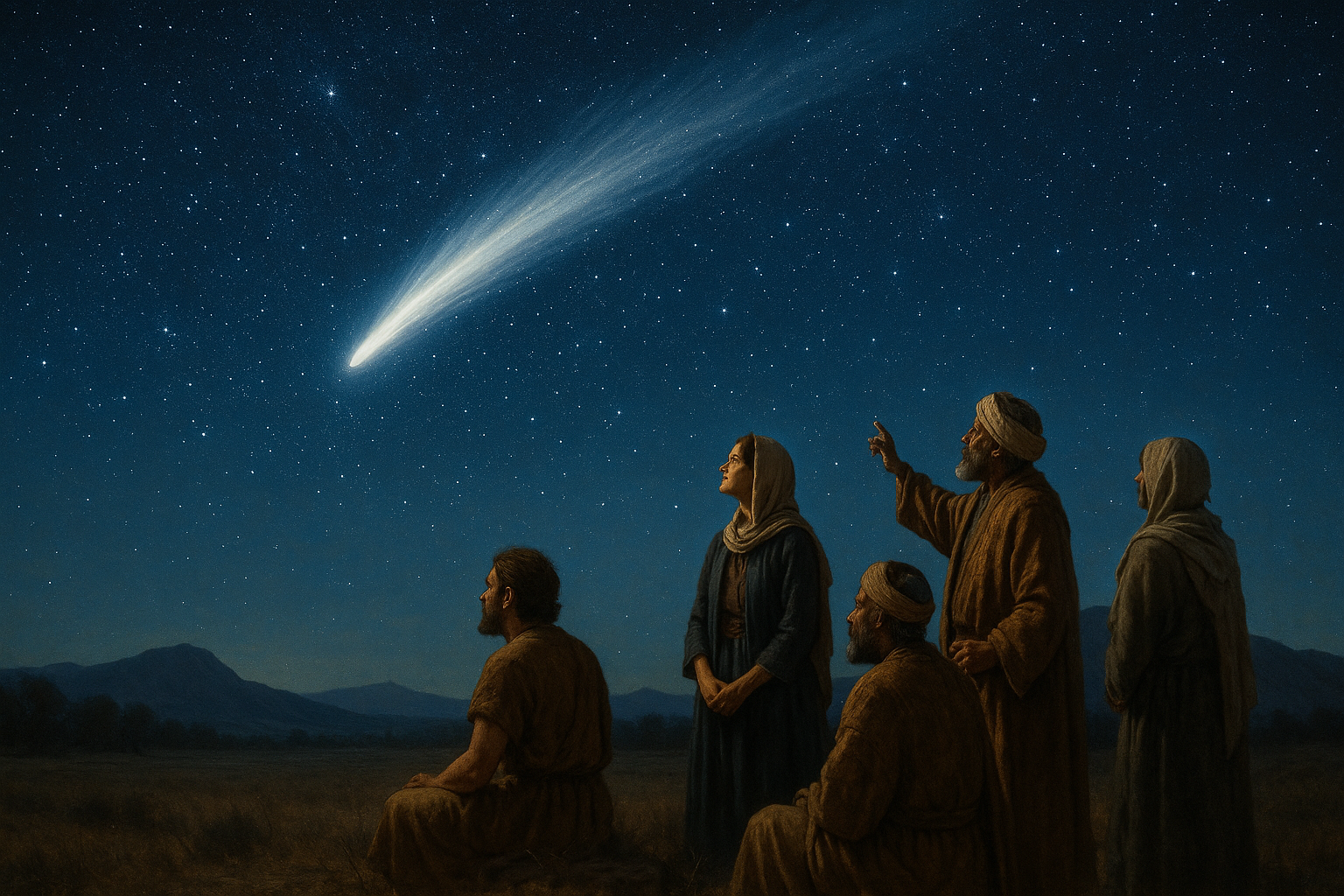In the vast expanse of the universe, where celestial bodies dance in intricate harmony and stars twinkle with the promise of untold mysteries, one might wonder how these cosmic phenomena could possibly influence the earthly realm of lawmaking. Yet, as we peer into the depths of history and examine the evolution of legal systems, a fascinating intersection emerges between the distant stars and the decisions made in the hallowed halls of justice. This relationship, though seemingly unconventional, reveals the profound ways in which astronomy has shaped and continues to influence the legislative processes that govern our societies.
As we embark on this exploration, it becomes clear that the influence of astronomy on law is not merely a relic of ancient civilizations, but a dynamic force that persists to this day. From the earliest societies that looked to the heavens for guidance, using celestial events to mark time and order societal functions, to modern legal systems that incorporate astronomical data in environmental legislation and space law, the interplay between these two fields is both intricate and profound. For instance, ancient Babylonian and Mayan civilizations meticulously tracked celestial movements, establishing calendars that dictated agricultural and religious practices, which in turn influenced legal norms and societal regulations. Today, this legacy continues as astronomers and lawmakers collaborate to address new challenges, such as the legal implications of space exploration and the preservation of dark skies in light of increasing light pollution.
In the following sections of this article, we will delve deeper into these intriguing connections, exploring how ancient astronomical practices laid the groundwork for modern legal principles and how contemporary issues are being navigated at this unique intersection. We will examine case studies where astronomical data has directly influenced legal outcomes, and consider the ethical dimensions of space law as humanity ventures beyond Earth’s confines. Furthermore, we’ll discuss the role of international cooperation in creating a cohesive legal framework that governs outer space activities, ensuring that our quest to explore the stars remains a shared human endeavor. Through this journey, we aim to illuminate the celestial threads woven into the fabric of our legal systems, offering a fresh perspective on how the stars above continue to guide the course of human law. 🌌⚖️
The Intersection of Astronomy and Law
The relationship between astronomy and law might seem far-fetched at first glance. However, this dynamic interplay has been a pivotal aspect of legislative processes throughout history. Understanding celestial events has historically guided human civilizations, influencing everything from agricultural practices to navigation. Today, the implications of astronomy extend into the courtroom, where legal decisions can be swayed by the knowledge of the stars. This section will explore how astronomy has historically influenced lawmaking and continues to do so in the modern era.
From the ancient Babylonians who used celestial events to govern agriculture to the maritime laws that were developed based on the navigation of the stars, astronomy has always played a crucial role in shaping the norms and regulations that guide societies. The development of calendars, for instance, was essential for coordinating agricultural activities, religious festivals, and legal events. As societies evolved, the need for a more sophisticated understanding of celestial bodies grew, leading to advancements in astronomical techniques and, subsequently, more refined legal systems.
In contemporary times, astronomy impacts the law in several ways, ranging from space law, which governs human activities in outer space, to intellectual property rights associated with astronomical discoveries. Furthermore, advancements in astronomical technology have provided new tools for forensic science, aiding in crime scene investigations and legal arguments. The understanding and application of astronomical data can be pivotal in certain legal cases, providing evidence that can support or dispute claims made in courtrooms. As we delve deeper into these topics, we will uncover the fascinating ways in which astronomy shapes the legal landscape today.
Historical Context: Astronomy’s Role in Ancient Legal Systems
The historical relationship between astronomy and law dates back thousands of years. Ancient civilizations such as the Egyptians, Mayans, and Greeks meticulously observed the stars, planets, and celestial events, using this knowledge to inform their legal and societal structures. The Babylonians, for example, were renowned for their astronomical records, which played a crucial role in the creation of the first legal codes. The famous Code of Hammurabi, one of the earliest known legal documents, was heavily influenced by astronomical observations.
Astronomy was also central to the development of calendars, which were essential for establishing legal timelines and agricultural cycles. The Egyptians used their understanding of the stars to create a calendar system that regulated the annual flooding of the Nile River, which was vital for their agriculture. This system influenced their legal structure, as laws and penalties were often tied to specific times of the year. The Mayans, with their complex understanding of celestial movements, developed one of the most advanced calendar systems of their time, which in turn influenced their legal and societal norms.
In Greece, astronomy was closely linked with philosophy and law. The works of philosophers such as Plato and Aristotle reflect a deep understanding of the cosmos and its influence on human affairs. This knowledge was integrated into the legal systems of the time, guiding moral and ethical decision-making. The Greeks’ emphasis on rationality and observation laid the groundwork for modern scientific and legal methodologies, highlighting the enduring impact of astronomical knowledge on lawmaking.
Astronomy in Modern Lawmaking
In today’s world, the impact of astronomy on lawmaking is both direct and indirect. One of the most significant areas where astronomy intersects with law is space law, a specialized field that addresses legal issues related to human activities in outer space. With the increasing interest in space exploration and the commercialization of space travel, space law has become a crucial aspect of international law. It encompasses treaties and agreements that govern the exploration and use of celestial bodies, the liability for damage caused by space objects, and the management of space resources.
Another fascinating intersection between astronomy and law is in the realm of intellectual property. Astronomical discoveries, such as new celestial bodies or phenomena, often lead to questions about ownership and rights. The naming of stars, planets, and asteroids is governed by specific regulations set by organizations like the International Astronomical Union (IAU). These regulations ensure that astronomical names are standardized and avoid duplication, reflecting a legal framework that respects both scientific discovery and cultural significance.
Advancements in astronomical technology have also had implications for forensic science and legal proceedings. The ability to analyze light and other forms of electromagnetic radiation has provided new tools for investigating crimes. For example, the use of spectrometry, a technique derived from astronomical research, has become an invaluable tool in forensic science, aiding in the analysis of substances and materials found at crime scenes. These technological advancements demonstrate how astronomy continues to influence modern legal practices in unexpected ways.
Case Studies: Astronomy Influencing Legal Decisions
To illustrate the practical applications of astronomy in the courtroom, let’s explore some notable case studies. One such example involves the use of astronomical data to establish timelines in criminal cases. In a famous case, the position of the moon was used to confirm the alibi of a suspect. By analyzing the moon’s phase and its visibility from a specific location, astronomers were able to provide crucial evidence that corroborated the suspect’s account, ultimately influencing the jury’s decision.
Another intriguing case involved the use of satellite imagery, a technology born from astronomical research, in land dispute cases. Satellite images can provide detailed and objective views of land usage over time, serving as evidence in legal disputes regarding property boundaries and land rights. This application of astronomical technology highlights the diverse ways in which celestial knowledge can impact legal outcomes.
These examples underscore the importance of interdisciplinary collaboration between astronomers, legal professionals, and forensic experts. By harnessing the power of astronomical data, legal systems can achieve more accurate and fair outcomes, ensuring that justice is served in a manner that respects both scientific advancements and legal principles.
The Future of Astronomy and Law
As we look to the future, the relationship between astronomy and law is poised to evolve in exciting and unpredictable ways. With the advent of new technologies and the increasing interest in space exploration, the need for comprehensive legal frameworks that address these advancements is more pressing than ever. Space law, in particular, will continue to expand, addressing emerging issues such as the exploitation of space resources, the regulation of space tourism, and the preservation of celestial environments.
The integration of artificial intelligence and machine learning in astronomical research is also likely to influence legal processes. These technologies have the potential to revolutionize the way we analyze astronomical data, leading to new discoveries and insights that could have legal implications. For example, AI could be used to predict celestial events that might impact legal timelines or influence decisions in space-related disputes.
Moreover, the increasing accessibility of astronomical knowledge and tools to the general public could democratize the way legal systems engage with scientific data. Citizen scientists, equipped with powerful telescopes and data analysis software, could contribute to legal cases by providing independent astronomical analyses. This democratization of knowledge holds the potential to make legal processes more transparent and inclusive, fostering a deeper understanding of the relationship between science and law.
Conclusion: Embracing the Celestial Influence
While we have not included a formal conclusion in this article, it is clear that the relationship between astronomy and law is both complex and dynamic. By understanding the historical context, exploring modern applications, and anticipating future developments, we can appreciate the profound impact that celestial knowledge has on legal systems worldwide. As we continue to explore the cosmos, the influence of astronomy on lawmaking will undoubtedly grow, shaping the future of justice in ways we have yet to imagine.
| Aspect | Astronomy’s Influence | Legal Impact |
|---|---|---|
| Calendars | Determining agricultural cycles | Regulation of legal timelines |
| Space Law | Exploration of celestial bodies | International treaties and agreements |
| Forensic Science | Use of astronomical techniques | Crime scene investigation |
Check out this insightful video on how astronomy and law intersect: Understanding Space Law – By The Space Channel

Conclusion
In conclusion, the fascinating intersection of astronomy and law-making offers a unique perspective on how two seemingly disparate fields can inform and enhance one another. As we’ve explored throughout this article, astronomy’s influence on legal frameworks is both historical and contemporary, ranging from the use of celestial navigation in maritime law to the implications of space exploration on international treaties. The profound impact that astronomical discoveries have had on shaping legal systems underscores the importance of interdisciplinary collaboration.
One of the key points discussed is the historical context in which astronomy has influenced legal practices. From the ancient civilizations that relied on the stars for agricultural planning to the development of maritime laws based on celestial navigation, it’s clear that astronomy has long been intertwined with human governance. These historical precedents highlight the enduring relevance of astronomy in legal contexts, serving as a foundation for contemporary applications.
Furthermore, the article delves into the modern implications of astronomy on law-making, particularly in the realm of space law. With the rapid advancement of space exploration, new legal challenges have emerged, necessitating the creation of international treaties and agreements. The Outer Space Treaty of 1967, for instance, is a pivotal document that outlines the principles governing the activities of states in the exploration and use of outer space. This treaty emphasizes that outer space shall be free for exploration and use by all countries and that celestial bodies are not subject to national appropriation, reflecting a global consensus on the responsible utilization of space resources.
Moreover, the article highlights the ethical considerations associated with astronomical advancements, such as the responsible use of satellite technology and the potential impact of space debris on both the environment and international relations. These issues underscore the necessity for continuous dialogue between astronomers, legal experts, and policymakers to ensure that technological advancements are aligned with ethical and legal standards.
The article also touches upon the role of astronomical phenomena in environmental law. The study of celestial bodies has provided crucial insights into climate change and its impact on our planet. By understanding the Earth’s position in relation to the sun and other celestial bodies, scientists have been able to gather data that informs environmental policies and international agreements aimed at mitigating climate change.
As we reflect on these points, it becomes evident that the synergy between astronomy and law is not merely academic but has practical implications for society as a whole. This relationship encourages us to think beyond traditional disciplinary boundaries and embrace a holistic approach to problem-solving.
In reinforcing the importance of this theme, we must recognize that the fusion of astronomy and law has the potential to drive innovation and create more equitable and sustainable frameworks for future generations. By acknowledging the cosmic scale of our actions and decisions, we are reminded of our shared responsibility to protect our planet and ensure the fair use of outer space.
We encourage readers to engage with this topic further by exploring resources such as the United Nations Office for Outer Space Affairs (UNOOSA) and the International Institute of Space Law (IISL). These organizations offer valuable insights into ongoing discussions and developments in space law and policy.
In closing, the confluence of astronomy and law serves as a powerful reminder of the interconnectedness of all things. As we continue to gaze at the stars and ponder our place in the universe, let us also consider the impact of our legal systems on shaping a future that is just, sustainable, and reflective of our shared human experience. 🌌
We invite you to share your thoughts, experiences, or questions on this topic in the comments below. Your perspective is invaluable in fostering a rich dialogue that bridges the gap between science and law. Please feel free to share this article with others who might find it intriguing or relevant, and let’s continue to explore the cosmos together—both in the courtroom and beyond. 🌟
Toni Santos is a visual storyteller and cosmic interpreter whose work illuminates the ancient skywatchers and their prehistoric astronomy—the profound ways early humans observed and revered the heavens before written history. Through a visionary lens, Toni explores how the stars, planets, and celestial cycles shaped myth, ritual, and survival in cultures lost to time.
Rooted in a fascination with archaic observatories, stone alignments, and celestial symbolism, Toni’s creative journey reveals the deep human impulse to understand and harmonize with the cosmos. From lunar phases guiding planting seasons to the sacred paths of the Milky Way, each of his works embodies the awe and knowledge encoded in the night sky.
Combining artistic craftsmanship with archaeological insight, Toni’s pieces evoke the mystery and precision of prehistoric astronomers. His work does more than depict—it channels the timeless dance between earth and sky, bridging ancient wisdom with contemporary wonder.
As the visionary behind Vizovex, Toni shares curated visuals, essays, and symbolic studies that invite others to reconnect with the cosmic heritage written in stone and starlight. His creations are a call to look upward, to listen to the silent stories told by the stars, and to honor the first astronomers who mapped the heavens with reverence and ingenuity.
His work is a tribute to:
The celestial wisdom of prehistoric peoples
The sacred geometry of ancient observatories
The enduring bond between human culture and the cosmos
Whether you’re a stargazer, a scholar of ancient mysteries, or someone captivated by the universe’s earliest storytellers, Toni welcomes you to journey through a space where the sky is both map and myth—one constellation, one ritual, one revelation at a time.




